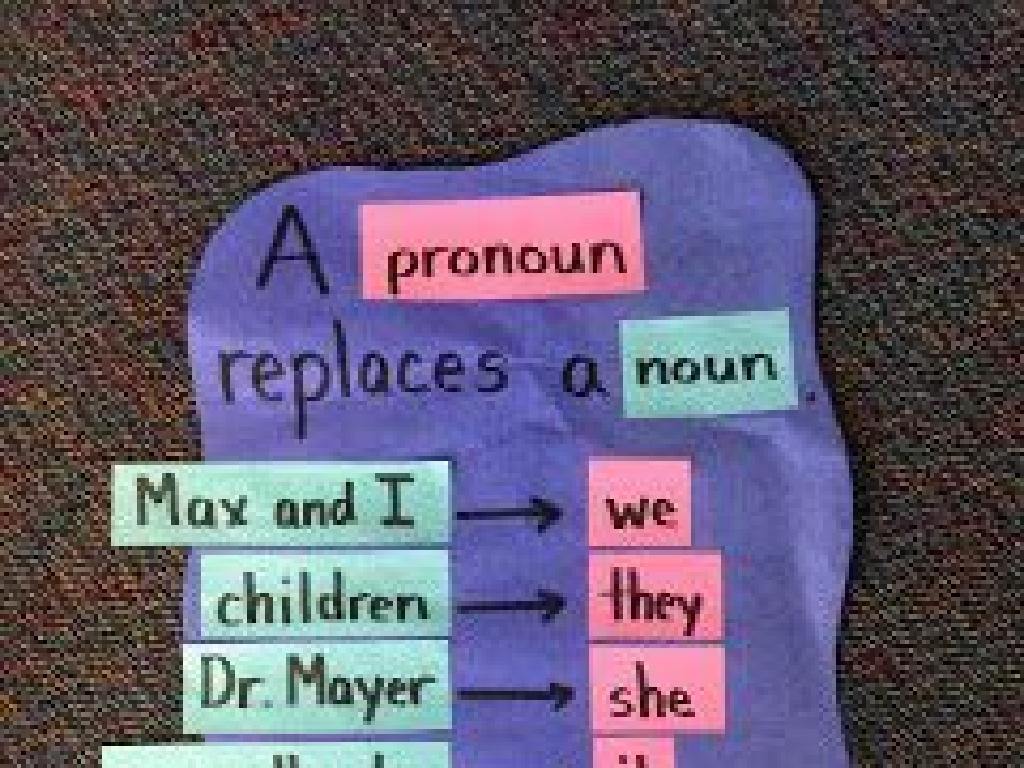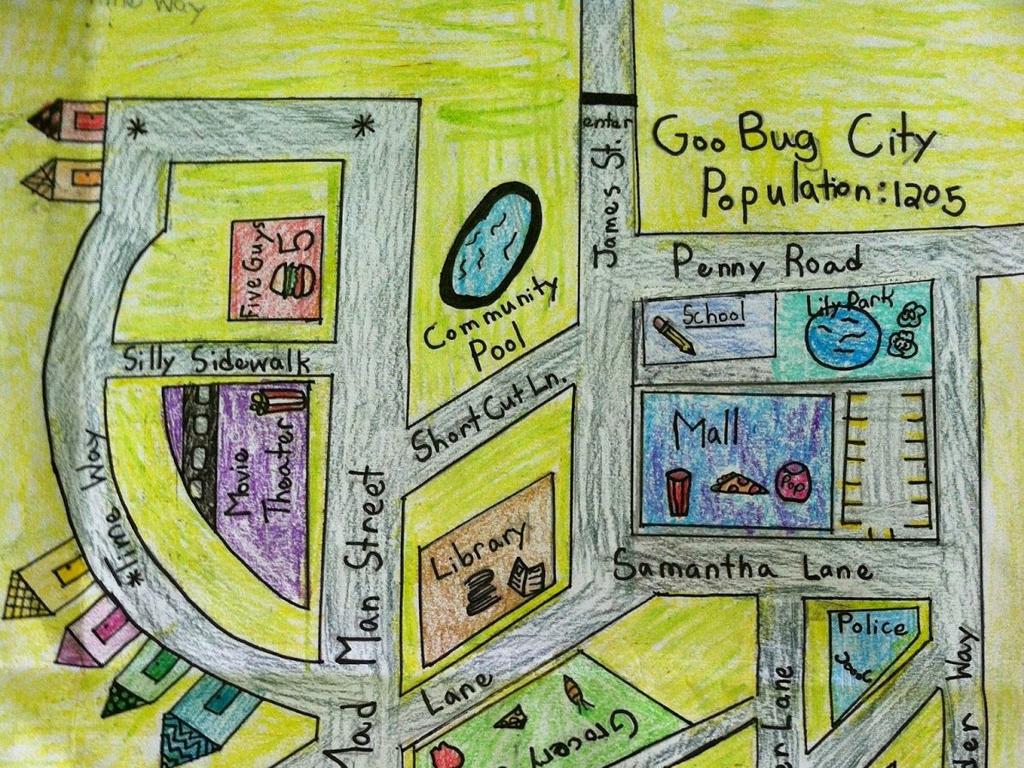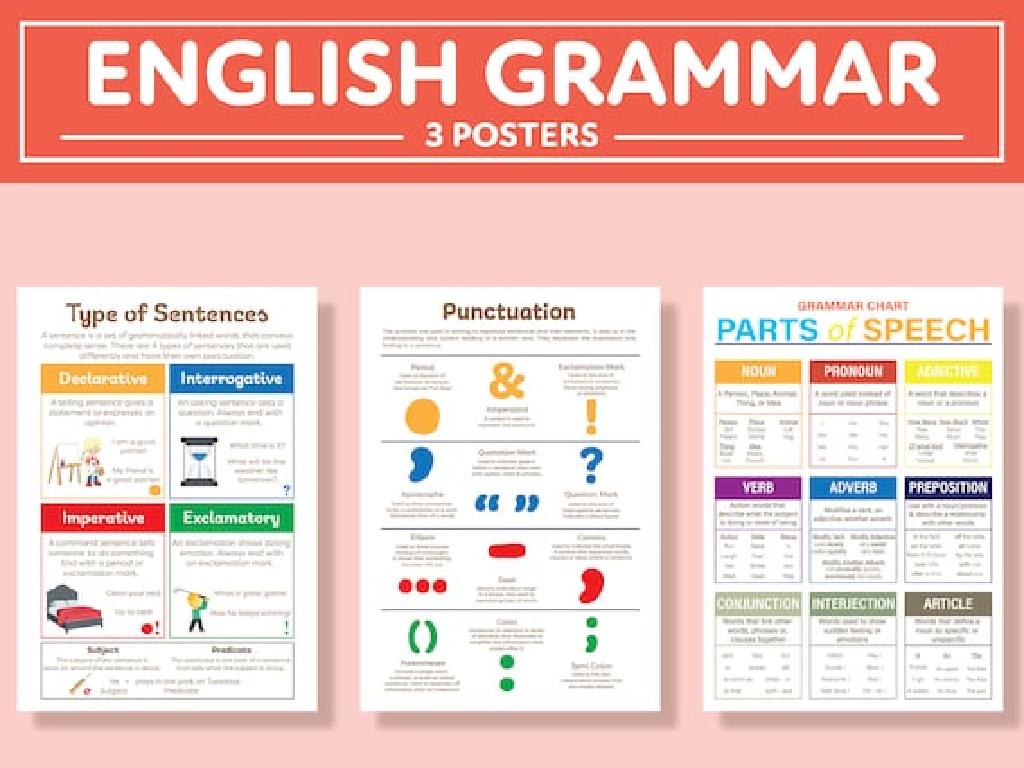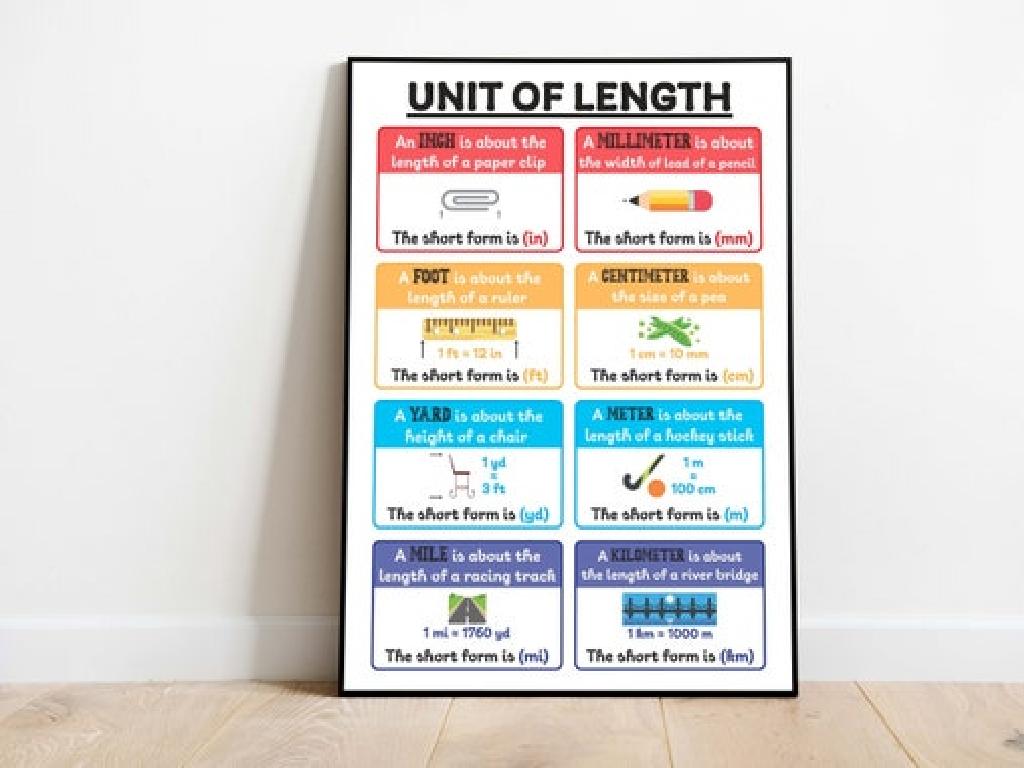Graph A Proportional Relationship: Word Problems
Subject: Math
Grade: Seventh grade
Topic: Proportional Relationships
Please LOG IN to download the presentation. Access is available to registered users only.
View More Content
Graphing Proportional Relationships
– Define proportional relationships
– A relationship where two quantities increase at the same rate.
– Explore real-life examples
– Recipes in cooking, currency exchange rates, and distance-time relationships in travel.
– Graphing via word problems
– Translate word problems into graphs representing consistent ratios.
– Practice and application
|
This slide introduces the concept of proportional relationships and their significance in real-world situations. Begin by defining proportional relationships, emphasizing that they involve quantities that change at the same rate. Provide tangible examples, such as recipes, where doubling ingredients doubles the number of servings, or how speed relates to travel time at a constant rate. The main activity will involve translating word problems into graphs, which will help students visualize and better understand the concept of proportionality. Encourage students to think of other examples of proportional relationships they encounter in daily life. The practice and application section will involve students working on problems to reinforce their understanding.
Understanding Proportional Relationships
– Define proportional relationship
– A relationship where two quantities increase or decrease at the same rate
– Explore constant of proportionality (k)
– ‘k’ represents the consistent ratio between two quantities
– Identify proportional situations
– For example, if 4 apples cost $2, then 8 apples cost $4 (k=0.5)
– Distinguish non-proportional cases
– If 5 books cost $20 and 10 books cost $45, the relationship is not proportional
|
This slide introduces the concept of proportional relationships, a fundamental aspect of understanding ratios and rates in mathematics. Begin by defining a proportional relationship as one where two quantities vary at a constant rate. Introduce the constant of proportionality, ‘k’, which is the ratio that remains the same as the quantities change. Provide clear examples to illustrate proportional situations, such as the cost of apples, where the price per apple remains constant. Contrast this with non-proportional examples, such as the book pricing, where the cost per book changes. Encourage students to think of other real-life examples and to practice identifying the constant of proportionality from given data.
Representing Proportions with Equations
– Express relationships as equations
– Use y = kx to represent proportional relationships, where k is the constant.
– Find the constant of proportionality
– The constant k is found by dividing y by x for any point on the line.
– Practice writing proportional equations
– Given a table or graph, write the equation that shows the relationship.
– Understand real-world applications
– Apply equations to solve real-life problems involving direct proportions.
|
This slide introduces students to the concept of representing proportional relationships using equations. Emphasize the formula y = kx, where k is the constant of proportionality, and explain that it can be determined by the ratio of y to x. Provide practice opportunities for students to write equations from tables, graphs, or word problems that exhibit proportional relationships. Highlight the importance of understanding this concept for solving real-world problems, such as calculating recipes or determining speed. Encourage students to bring examples from their daily lives that may represent proportional relationships.
Graphing Proportional Relationships
– Proportional graphs are linear
– A straight line represents a constant rate of change
– They pass through the origin
– (0,0) is where the line crosses the x and y-axis
– Slope equals constant of proportionality
– Slope (rise over run) shows the rate at which y changes with x
– Graphing helps visualize relationships
|
When teaching students about graphing proportional relationships, emphasize that these graphs will always be straight lines because the ratio between the two variables remains constant. The line passing through the origin signifies that when one variable is zero, so is the other, which is a key property of proportional relationships. The slope of the line, or the constant of proportionality, represents how much one variable changes in relation to the other. For example, if k=3, then for every 1 unit increase in x, y increases by 3 units. Use word problems to apply this concept, such as comparing the cost of apples per pound to reinforce understanding. Have students practice by plotting points and drawing lines through the origin to visualize different proportional relationships.
Graphing Proportional Relationships: Word Problems
– Comprehend the word problem
– Find the constant of proportionality
– The ratio that relates two quantities that are proportional
– Set up the proportional equation
– Use the constant to form y = kx, where k is the constant
– Graph the relationship
– Plot points on a graph to visualize the proportion
|
This slide is aimed at teaching students how to approach word problems involving proportional relationships. Start by ensuring they understand the problem’s context and what is being asked. Then, guide them to identify the constant of proportionality, which is the unchanging value between two proportional quantities. Once they have the constant, students should learn to set up an equation in the form of y = kx, where k is the constant of proportionality. Finally, instruct them on how to graph this equation by plotting points that satisfy the equation on a coordinate plane. Encourage students to practice with various word problems to become comfortable with the process.
Let’s Practice: Proportional Relationships
– Fundraiser problem scenario
For every $5 donated, the school gets 3 new books. How many books for $20?
– Recipe conversion challenge
A recipe for 4 people uses 6 eggs. How many eggs for 10 people?
– Group activity instructions
Work in groups to solve problems and graph the results.
– Graphing proportional relationships
|
This slide is designed to engage students in applying their knowledge of proportional relationships to solve real-world problems. The first problem involves a school fundraiser where donations are directly proportional to the number of books received. The second problem requires students to convert a recipe based on the number of servings, another example of a proportional relationship. In the group activity, students will collaborate to solve these problems and then graph the relationships, reinforcing their understanding of how to represent proportional relationships visually. Provide guidance on setting up the correct ratios and encourage students to discuss their reasoning with their peers. Offer graph paper and assist with plotting points and drawing lines that represent the proportional relationships.
Class Activity: Graph Your Own!
– Create a proportional word problem
– Graph the relationship
Use graph paper or digital tools to plot points that show the relationship.
– Share and explain your graph
Present your graph to the class, explaining the proportional relationship it represents.
– Discuss proportionality
Explain how you determined the relationship was proportional.
|
This activity is designed to reinforce students’ understanding of proportional relationships through practical application. Students will create their own word problems that involve proportional relationships, which will help them recognize these relationships in real-world contexts. After crafting their problems, they will graph the relationships, using either graph paper or a digital graphing tool. Encourage creativity in their scenarios but ensure the relationships are indeed proportional. When sharing with the class, students should explain how the graph demonstrates proportionality, such as showing a constant rate of change or a straight line through the origin. This activity will also enhance their communication skills as they explain mathematical concepts. Possible variations for individual students could include different rates, units, or contexts (e.g., speed/distance, cost/items, etc.).
Review and Q&A: Proportional Relationships
– Recap of proportional relationships
A proportional relationship is two quantities maintaining a constant ratio.
– Open floor for questions
– Discuss real-life applications
Examples include recipes, map scales, and speed.
– Encourage curiosity and understanding
Understanding these concepts is crucial for solving real-world problems.
|
This slide aims to consolidate the students’ understanding of proportional relationships by reviewing the key concepts covered in the lesson. Begin by summarizing how proportional relationships involve a constant ratio between two quantities. Then, invite students to ask any questions they might have, providing clarifications as needed. Discuss practical applications of proportional relationships, such as in cooking, where ingredients are mixed in a specific ratio, or in understanding distances on a map. Emphasize the importance of these concepts in everyday life and encourage students to think of additional examples. The goal is to foster a deeper understanding and appreciation for how math applies outside the classroom.
Homework: Graphing Proportional Relationships
– Complete the worksheet provided
– Find a real-world proportional example
– Think of examples like speed or recipes
– Create your own word problems
– Use the format from class to make problems
– Practice solving proportional problems
– The more you practice, the better you’ll understand
|
This homework assignment is designed to reinforce the concepts learned in class about graphing proportional relationships through practice. Students are expected to complete a worksheet that provides structured practice. Additionally, they should find a real-world example of a proportional relationship, such as the relationship between distance and time at a constant speed, or ingredients in a recipe. Encouraging students to create their own word problems will help them understand the concept more deeply and apply it to various scenarios. During the next class, students will have the opportunity to discuss their real-world examples and share the word problems they’ve created, fostering a collaborative learning environment.






